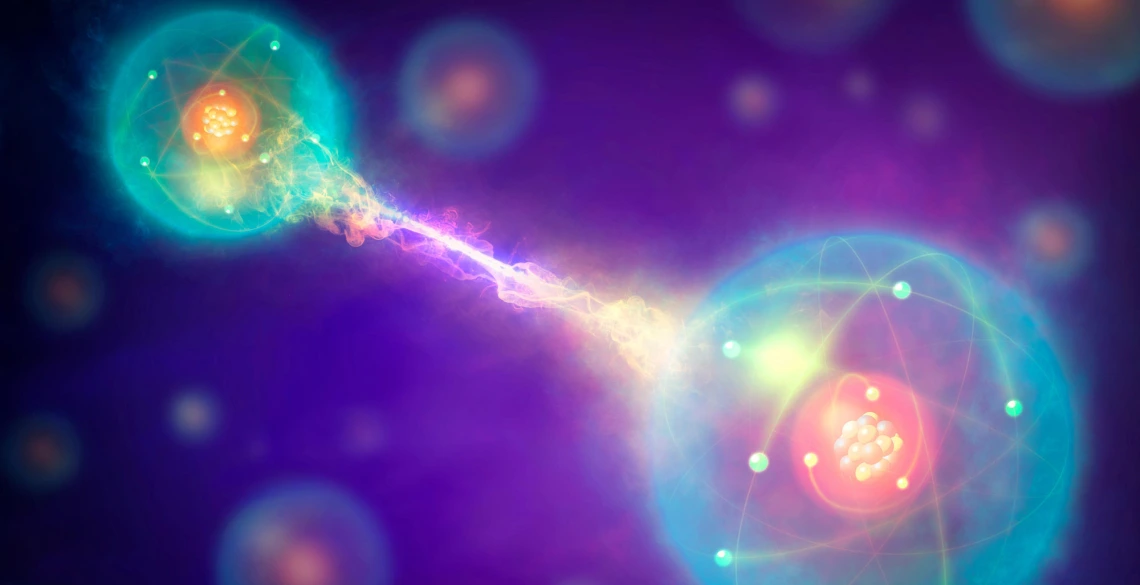Interdisciplinary UA Researchers Get Tangled Up in Quantum Computing
UA researchers are building a quantum hub known as Inquire, which will be the world's first shared research and training instrument to help researchers in diverse fields benefit from quantum resources.

Conceptual artwork of a pair of entangled quantum particles interacting. (Photo: Mark Garlick/Science Photo Library)
Good neighbors often share resources: a cup of sugar, extra lawn chairs, a set of jumper cables. Researchers across campus at the University of Arizona will soon be able to share a less common -- and far more valuable -- resource to help them further their research: entangled photons, or interlinked pairs of light particles.
With approximately $1.4 million in funding -- $999,999 from the National Science Foundation and about $400,000 from the UA -- professor Zheshen Zhang is leading the construction of the Interdisciplinary Quantum Information Research and Engineering instrument, known as Inquire, at the UA. Inquire is the world's first shared research and training instrument to help researchers in diverse fields -- including those with no expertise in quantum information science – benefit from quantum resources.
Zhang is an assistant professor of materials science and engineering and optical sciences, and the leader of the Quantum Information and Materials Group at the UA. The co-investigators of the Inquire project include Ivan Djordjevic, professor of electrical and computer engineering and optical sciences; Jennifer Barton, director of the BIO5 Institute and professor of biomedical engineering, biosystems engineering, electrical and computer engineering, and optical sciences; Nasser Peyghambarian, professor of optical sciences; and Marek Romanowski, associate professor of biomedical engineering, and materials science and engineering.
It seems like science fiction, but Zheshen is building a facility that will create quantum-entangled photons, then deliver them via fiber optics halfway across campus.

